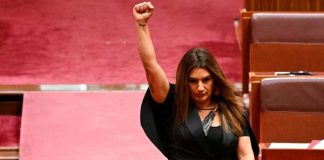Richard Di Natale’s sudden ascension to The Greens’ leadership appears to mean the status quo remains—but that’s not what the left and the movements need.
Many in The Greens’ left, including Senator Lee Rhiannon, have spoken out about the rushed, undemocratic nature of the leadership change.
But the bigger worry is that Di Natale plans to follow in the footsteps of founding leader Bob Brown and his successor Christine Milne and embrace parliamentary pragmatism.
Despite some right-wing columnists hoping otherwise, Di Natale has so far stuck to The Greens’ line on Abbott and the budget, arguing that “the big end of town should pay its way”.
It’s policies like these, and their principled stand on issues like asylum seekers, that has built The Greens support while Labor has moved closer and closer to the Liberals.
But The Greens’ exclusively parliamentary strategy has a natural conservative logic that is pulling them away from what has made them exceptional in the first place.
Di Natale told the 7:30 Report that he’s “prepared to work across party lines to get things done”. Asked if he was about getting more people elected or “doing politics differently”, he responded, without hesitation, “Oh, we’re here to get more people elected”, saying his goal was to “build on our achievements in parliament”.
It was that narrow vision that produced The Greens’ compromises with the minority Gillard Labor government, and the spectacular failure of the carbon tax. Instead of campaigning for immediate investment in solar power plants and green jobs, The Greens’ party room sought to find a solution amenable to parliament and business. Di Natale called the tax, “a moment when the parliament was at its best…working across party lines…to ensure we support action on climate change.”
Negotiation and compromise with the system means accepting its limits, not challenging them.
Left alternative
Instead of defining The Greens as a left party, Di Natale has continued the pitch to win Liberal voters, saying, he wants “people who are small L liberal voters” to know “you can trust us with your vote.” But the workers and unionists who still largely vote Labor are the force that can challenge the Coalition’s cuts and racism and Labor’s “metoosim”. As we go to print, federal public service workers are stopping work, using their power to strike to demand a fair pay deal.
Labor and union leaders have so far failed to build the fight we need against the Coalition. There is a space here for The Greens. They could use the megaphone provided by parliament to fan the flames of struggles and build the movements. They could accept the affiliation of trade unions.
So far, it doesn’t seem like Di Natale will pursue this approach—the left inside the party will need to make it theirs.
By Amy Thomas





